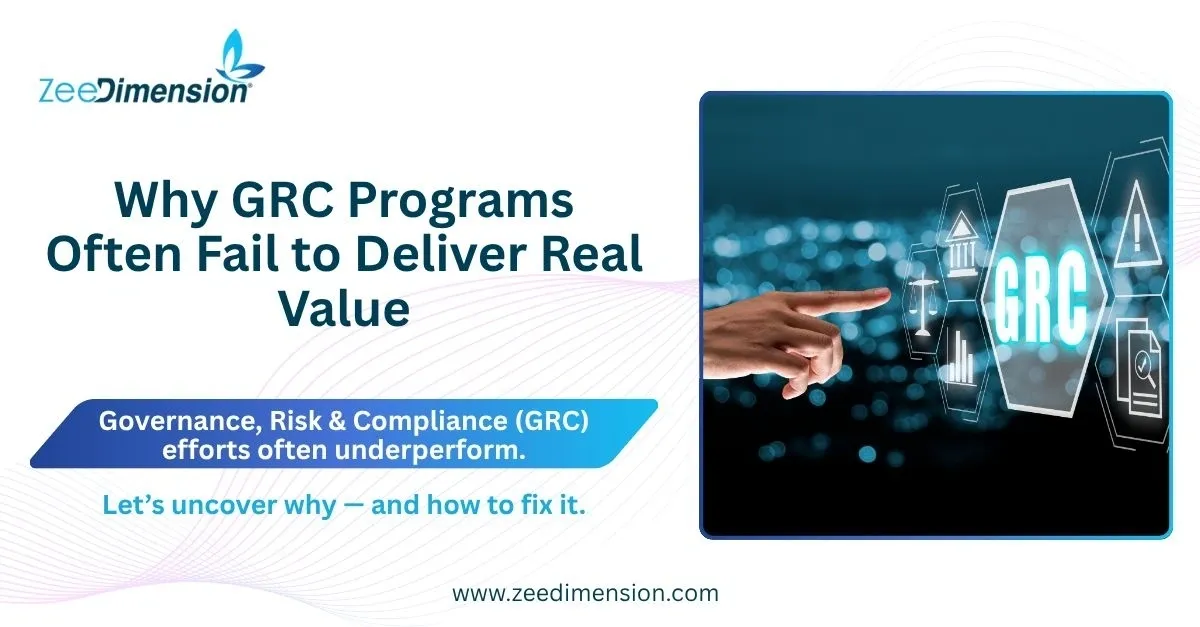
Why GRC Programs Often Fail to Deliver Real Value
Governance, Risk & Compliance (GRC) efforts often underperform.
Let’s uncover why — and how to fix it.
Problem #1 — Misalignment with Business Objectives
Disconnected from Strategy = No Value
Too many GRC programs run in isolation from business priorities.
Real Impact: GRC should empower strategy, not just satisfy auditors.
Problem #2 — Siloed Approach
Fragmentation Kills Efficiency
Risk in Finance. Compliance in Legal. Governance in the Boardroom.
These silos prevent a unified view of risks and lead to duplication.
Break down barriers. Integrate GRC functions.
Problem #3 — Over-Compliance, Under-Risk Management
Compliance ≠ Risk Management
Focusing only on compliance blinds organizations to strategic risks.
The biggest threats often aren’t regulatory—they’re operational, reputational, or emerging risks.
Problem #4 — Weak Leadership Support
No Leadership Buy-In? No Success.
Without visible, active support from leadership, GRC efforts flounder.
Executives must champion GRC as a strategic priority, not a checkbox.
Problem #5 — Poor Use of Technology
Manual Processes Hold You Back
Spreadsheets and disconnected tools limit visibility and slow action.
Modern GRC platforms bring automation, real-time insights, and better decisions.
Problem #6 — Static Programs in a Dynamic World
The Risk Landscape is Evolving — Are You?
Stagnant programs leave you exposed. Risks change. So should your GRC.
Continuous updates ensure relevance and resilience.
Problem #7 — Poor Communication & Training
People Can’t Follow What They Don’t Understand
Confusion and lack of clarity lead to mistakes.
Clear messaging and ongoing training empower everyone to own GRC.
The Solution
Make GRC a Strategic Enabler
-
Align with business objectives
-
Break down silos
-
Balance compliance with risk
-
Invest in tech
-
Evolve with risks
-
Communicate clearly
Transform GRC from frustration to value creation.







